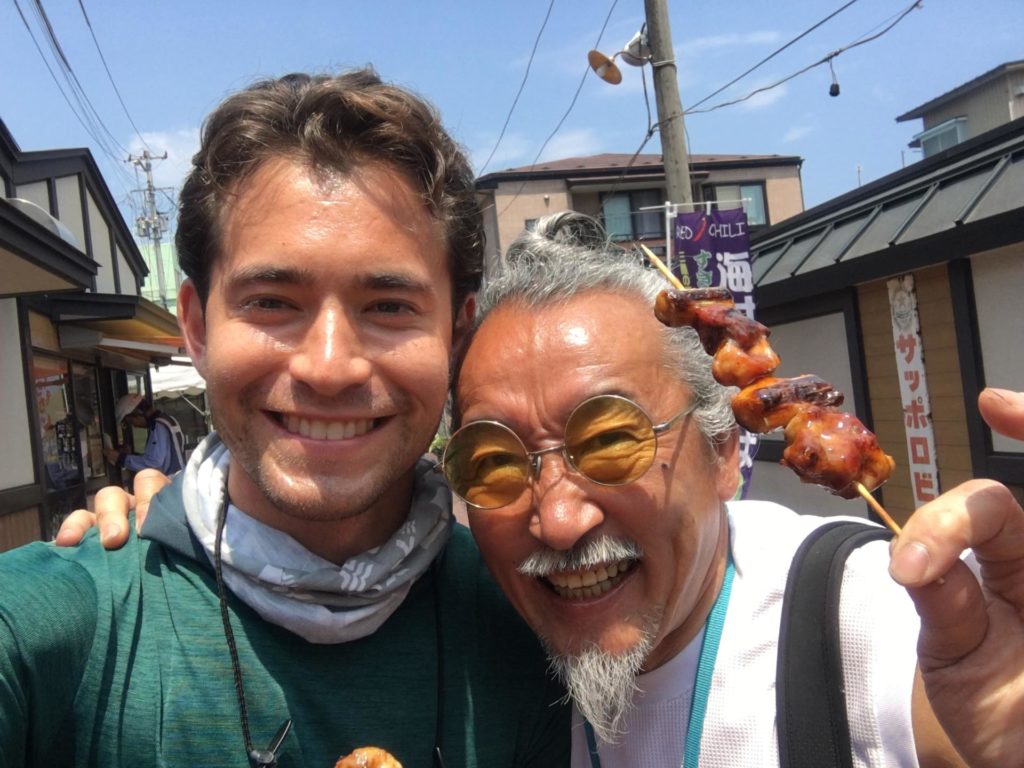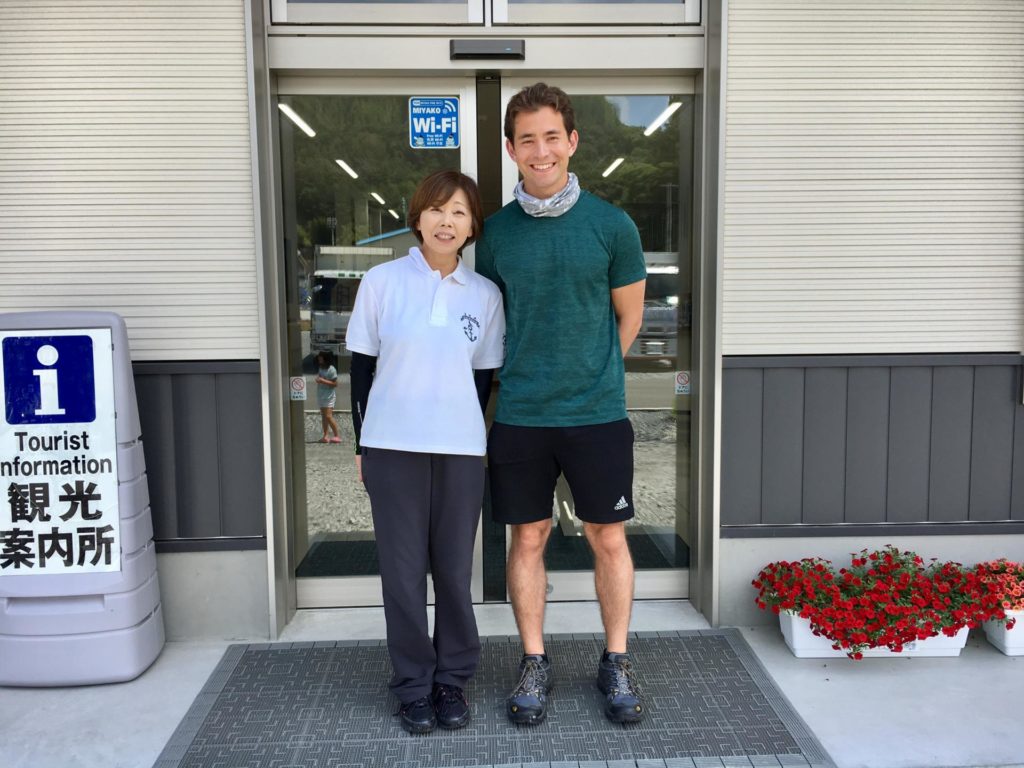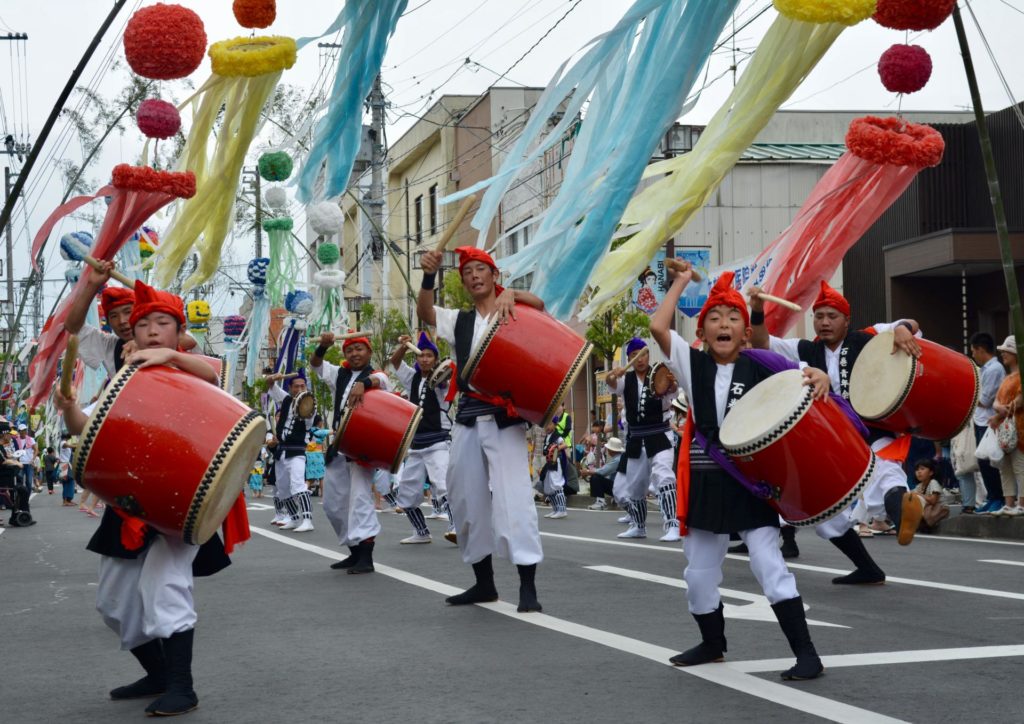My 25-kilogram backpack did not make the going any easier. Despite this, the natural beauty I encountered and the warmth and kindness of the resilient people I met along the way made it—hands down—one of the best experiences of my life.
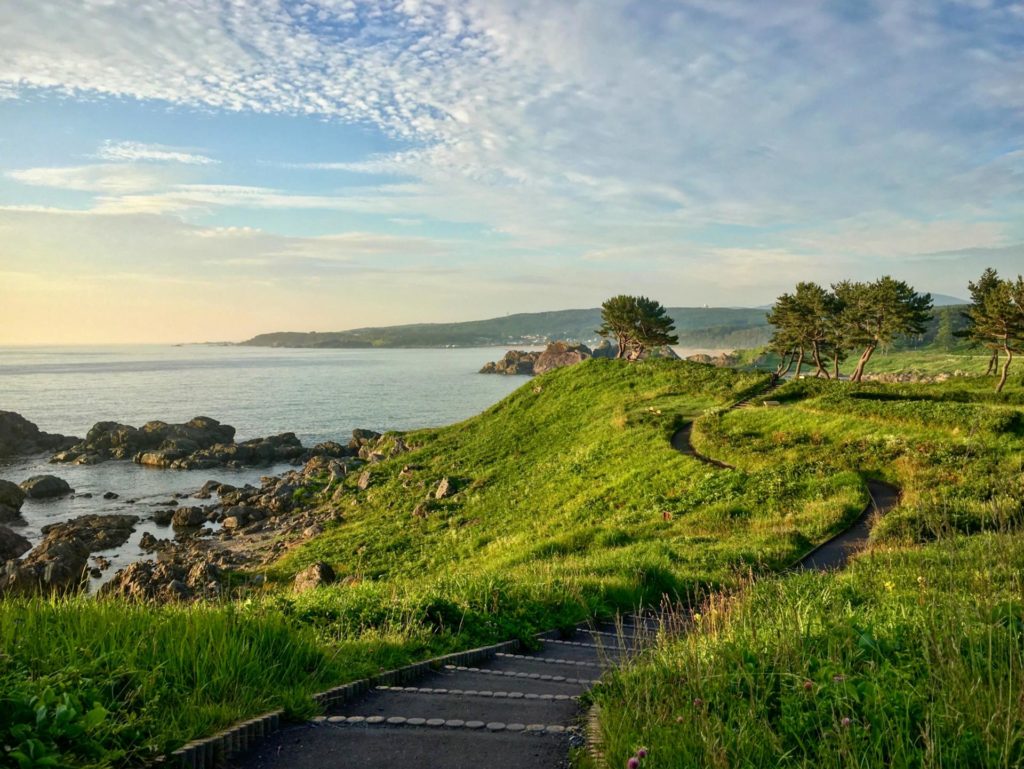
For 28 days I hiked along the stunning Sanriku Coastline, following the Michinoku Coastal Trail (MCT), a new walking trail set up by the Ministry of Environment to encourage people to get outdoors and explore Tohoku. The 600-kilometer walk took me through the lesser known prefectures of Aomori, Iwate, Miyagi and Fukushima in northeast Japan.
The walk was part of the “Explore Tohoku” Project, an initiative I set up with the support of two philanthropic organizations, the Japan Foundation Asia Center and The Next Challenge. The idea was to document the recovery of the Tohoku Region and promote tourism while walking along the tsunami-affected coastline. I chose to walk, as opposed to cycle or drive, to allow for spontaneous encounters and appreciate the smaller things I would experience on the way.
The MCT starts at Kabushima Shrine in Hachinohe (Aomori Prefecture) and finishes in Soma (Fukushima Prefecture). It passes through rugged countryside, small fishing villages, and the coastal settlements that were most severely affected by the 2011 Great East Japan Earthquake and tsunami.
As I made my way along the trail, I interviewed dozens of local residents about life after the earthquake, tsunami and nuclear crisis. I hoped to capture the locals’ perspective, and share their stories with people both inside and outside of Japan now that the disaster is slipping further from people’s memories. I also wanted to gather stories, photos and videos from Tohoku—the food, the scenery, the festivals and everything in between.
Having worked in Tohoku’s post-disaster recovery since April 2011, and also being half Japanese (my mother’s family has roots in Tohoku), the journey was a personal one. I started off after the tsunami as a volunteer, helping out in shelters, distributing food and interpreting for relief teams. This eventually led to a full-time job, bringing a range of experiences in Tohoku, other parts of Japan and disaster zones around the world, including Nepal, Haiti and Vanuatu.
This walk was, in a way, a culmination of all of these years’ work. It was as if the journey was going full circle, going back to where it all began. And so I set off with three cameras, a notebook and bear bells in hand, not knowing what to expect.
Northeast Beauty
Right from the get-go, the views were like none other I had seen in Japan. During the first few days, I walked along the Tanesashi Kaigan, a quiet stretch of Aomori dotted with jaw-dropping coastal scenery. The area is also home to an incredible array of flora, from orange lilies to hydrangea. Some other highlights included camping on the sparsely populated Oshima Island near Kesenuma, walking on “squeaky sand” (nakisuna) on Osuka Beach near Hachinohe, swimming amongst impressive rock formations in Jodogahama bay near Miyako and gazing out at the pine tree-covered islands of Matsushima, considered one of the top three scenic spots in Japan (Nihon Sankei).
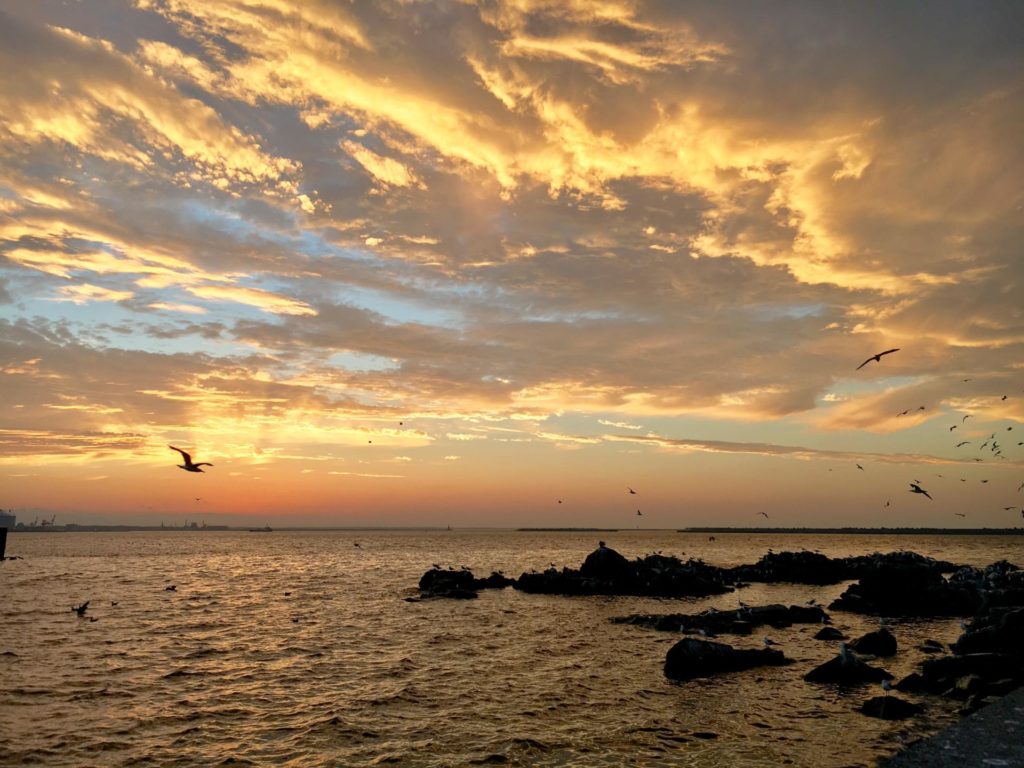
And then there were the crystal blue waters of Hirono in Iwate Prefecture (which I found out was home to several highly rated surf spots), the luscious fields of Fukushima and the countless shrines and temples I stumbled upon, each with its own unique character and charm.
After a month of walking, I came to the following conclusion: The coastline is even more beautiful than I’d expected. But it’s the people I met along the way who made it a truly remarkable experience.
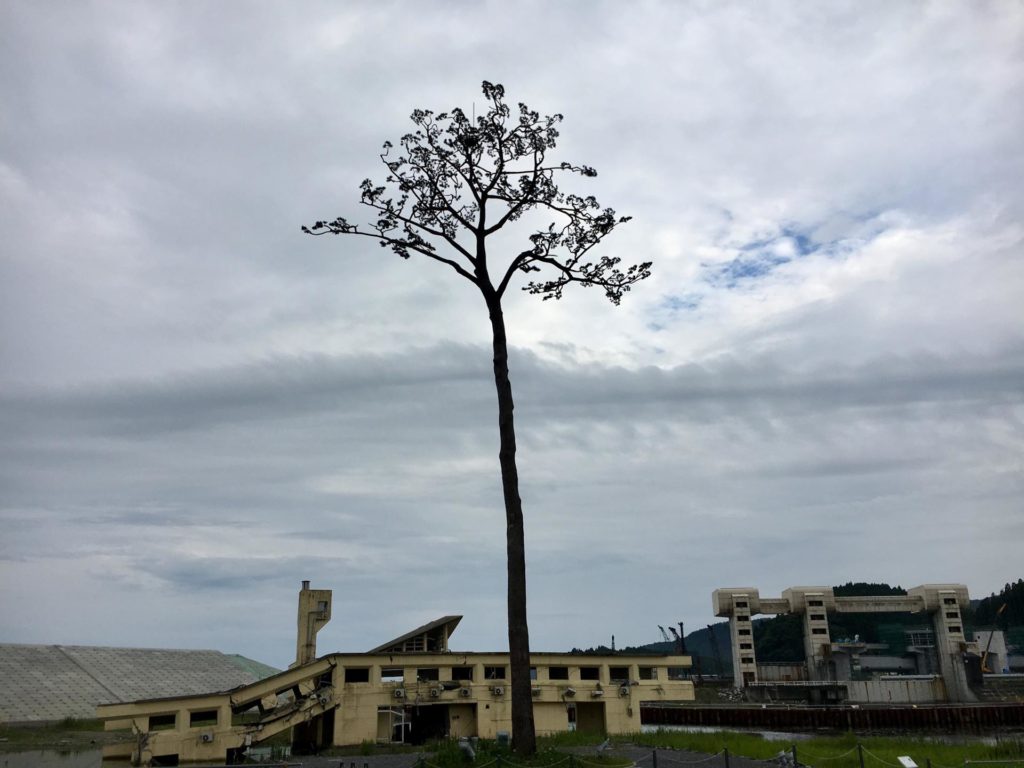
Acts of Kindness
This might sound a little over the top, but the encounters I had during my journey strengthened one of my long-held beliefs, that the majority of people are inherently good. They lled me with a sense of hope and optimism for the future.
Despite being a solo, male, non-Japanese-looking traveler (who probably looked rather rough, after several weeks of minimal hygienic upkeep), I was on the receiving end of countless random acts of kindness.
For example, there was the man who saw me walking into a shop in a small fishing village. He ran up to me, screaming “Hello!” (in English), bought me a meal and walked off without saying another word.
Then there was the woman who saw me walking up the trail towards her and told me to stop. She ran into her house, and brought out a chair, along with an ice cream and three cans of juice. We sat in the shade and talked until it was all gone.
Then there was the time I had an early morning chat with an elderly woman. We parted ways, and I continued walking. A few hours later, I heard a car screech to a halt next to me. There she was, with a bag of freshly picked berries and sweets to give to me as omiyage (customary souvenir).
And, of course, there were the more profound encounters.
Like the time that two elderly sisters offered me a place to stay at night, out of the blue, after seeing me about to pitch my tent at a michi–no–eki (roadside rest stop). When I asked them why they decided to help me, one of the women responded: “The tsunami took away so much from us. We lost family and our house was washed away…it was a time of extreme hardship, grief and sadness. In the weeks, months and years that followed, so many people from the outside came to help us. People who had never been to our town were working alongside us to rebuild it. Complete strangers…my family has been on the receiving end of so much kindness and generosity, many times from people we don’t know. So I think it’s important to pay it forward.”
And the time I met 80-year old Owada-san from Rikuzen-Takada, who told me about losing his home to tsunami twice in his lifetime. “I’ve been a fisherman since the age of 16. In 1960, my house was washed away by a big tsunami. Back then, we didn’t have any early warning systems or anything…it just came, and took everything away. So my wife and I built a new house from scratch and slowly put our lives back together. Then, 50 years later, my house was washed away again by the 2011 tsunami. Twice in a lifetime… When I stop to think about it, it’s really quite hard to believe. But we are people of the ocean. My whole life, I’ve had a profound connection with the sea. It has provided for my family for generations and I have a deep respect for it. So am I angry? No. We just have to get on with it. We will rebuild again and carry on.”
There were countless encounters such as these that made my journey in Tohoku truly memorable.
The tsunami claimed almost 20,000 lives and wiped many communities completely o the map, devastating hundreds of kilometers of coast. Now, six years on, the people of Tohoku are still busy rebuilding their lives. And, importantly, they are eagerly welcoming tourists from all over the world.
Offering stunning natural scenery, fresh seafood and other delicacies, and o -the-beaten- track adventures for travelers and outdoors enthusiasts, Tohoku has plenty of potential to grow as a tourist destination.
An influx of travelers is seen as one of the most effective ways to boost the local economy and ensure a sustained recovery. And visitors can have the added satisfaction of knowing their hard- earned cash will most likely, in one way or another, support the region’s recovery.
So next time you’re looking for a worthwhile travel experience in Japan, consider embarking on a Tohoku adventure, such as walking along the MCT. If it’s anything like what I experienced, you will not be disappointed.
Getting There: The trail starts at Kabushima Shrine near Same Station in Hachinohe, Aomori. Take the Tohoku Shinkansen from Tokyo to Hachinohe Station, then head to Same on the Hachinohe Line. From there, it is a 10-minute walk to the trail head. The trail finishes in Matsukawaura Kankyo Koen in Soma, Fukushima. From Tokyo Station, take the Akita Shinkansen to Sendai Station, then take the Joban Line to Soma Station. The trail head is a 50-minute walk or a 15-minute bus ride. More information about the trail can be found in English on the MCT website.
Accommodation: There are campsites, hotels, ryokan and minshuku dotted along the MCT. All campsites should be shown on the maps provided by the Ministry of Environment via the MCT website. Booking accommodation in English is possible through Rakuten Travel, Booking.com and Jalan, although these work only in the larger towns. Otherwise, search Google Maps to find conveniently located accommodation options or see the JNTO’s search page here.
Best Time to Go:
The trail can be walked year-round, although check on ice and snowfall conditions during winter. I would recommend spring, when Tohoku offers top-notch sakura viewing and when the owers are in full bloom. The changing leaves and cooler temperatures of autumn can also be ideal. Tohoku offers some incredible (and less crowded) ski resorts and onsen (hot springs) as well as some prime surf spots and beaches.
Find out more about the Explore Tohoku Project. You can also see photos from the trail on Instagram @robinlewisphotography. This walk was made possible by the Japan Foundation Asia Center and The Next Challenge.






